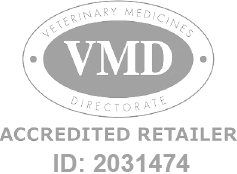Frequent Dog Conditions Seen at Vets

Frequent Dog Conditions Seen at Vets
According to household ownership, dogs are among the most popular pets in the UK, with almost a quarter of houses in the country providing a home to at least one of them. And this isn’t a recent development; for centuries, man and dog have existed alongside one another – indeed, it’s thanks to the latter that the former has prospered so impressively.
As a consequence of this partnership, we know a great deal about canine physiology. Veterinary schools across the country dedicate entire programmes to dogs, and an enormous volume of academic research is being constantly read and written on the subject of their health.
The answer to one particular question, however, has proven remarkably elusive – which diseases are most common? Until recently, data collection on the matter wasn’t widespread – and so a clear picture of the situation across the country has been difficult to come by.
Collecting the data
This problem came to be addressed by a collaboration between the Royal Veterinary College and the University of Sydney which aims to gather information on the severity and extent of diseases.
By having vets make records of diagnoses at the moment they’re made, we’re able to eliminate the biases and selective recall that can plague survey data. Since its inception in 2010, VetCompass has grown and now collaborates with hundreds of veterinary practices across the world, providing data that can help inform a more concerted, evidence-based approach to canine medicine.
The project has earned the support of respected animal welfare bodies like the Kennel Club, the RSPCA and the British Veterinary Association.
In 2014, the results of their work were published in the form of a study covering over 148,000 dogs over a four-year period between September 2009 and March 2013. Of these, a random sample of 3,884 was chosen for further examination; the records of each of these dogs were closely reviewed to see just how common certain diseases are.
A total of 8,025 different events were recorded, collectively accounting for more than 430 different diseases. The findings of the study coincide with previous investigations into the matter, notably a 1997 UK study and a 1999 US one.
430 different diseases in just 3,884 dogs is a surprisingly high number. So much so that a narrow approach which focuses on the most prevalent diseases is unlikely to yield results. Instead, a broader approach is called for – along with data that focuses on the risks to individual breeds.
Common diseases
Dog owners might be surprised to learn that genetic disorders like hip dysplasia are far less common than is widely supposed. This is largely because the public is made aware of genetic conditions, and prospective dog buyers are advised to check for them before giving an animal a home.
Practising vets, however, may be unsurprised to learn that relatively mundane conditions are in fact more prevalent. Let’s examine the diseases most frequently recorded in the VetCompass Study – bearing in mind that the percentage refers to the proportion of diseased dogs suffering from that disease, not the likelihood that a given dog will contract the disease in its lifetime.
Osteoarthritis (3.76%)
Osteoarthritis is a joint condition which erodes the protective cartilage surrounding the joints. This causes the bones to rub painfully against one another, eventually causing crippling lameness. Older dogs are at greater risk than younger ones, as are larger and obese dogs whose joints must bear greater weight.
Overgrown nails (71.1%)
This condition is self-explanatory, and not just aesthetic. When a dog’s nails grow too long, the result can be damaging. Overgrown nails are at greater risk of tearing, which can pose an infection risk. They can also interfere with a dog’s gait, which in turn can lead to muscular problems as the dog moves in an abnormal way.
If a dog’s nails make a clicking sound when they walk, then it’s probably time to trim them. Do this with a special nail clipper designed with dogs in mind.
Anal Sac Impaction (7.13%)
A dog’s anus comes equipped with a pair of potent glands, which can be used to secrete a disgusting-smelling liquid. Dogs use them to communicate with one another – which is why you might see one dog smelling another one’s anuses. Unlike wild dogs and, famously, skunks, domestic dogs generally lack the ability to spontaneously vacate their anal glands – and rely on the pressure of faeces to do so. When a dog suffers from diarrhoea, this pressure is largely absent, and so the chance of impaction increases.
Periodontal disease (92.9%)
When bacteria are allowed to accumulate inside a dog’s mouth, it can lead to gingivitis – a reddening of the gums which in turn eventually results in periodontal disease.
If the condition is not addressed, then the gap between the gums and the teeth will grow, affording bacteria more space to multiply. After this gap has formed, the damage is irreversible. Consequently, preventative measures to limit the likelihood of this happening are essential.
While the disease has many causes, it’s more prevalent in toy dog breeds whose teeth are crowded together, and in dogs who groom themselves, allowing harmful pathogens to enter their mouths. Dietary factors also play a part, so it’s important to ensure that your dog’s diet promotes good dental health. Dogs thought to be at risk will benefit from frequent veterinary examinations, in order to identify and address the problem before it has a chance to gain a foothold.
Otitis Externa (10.2%)
This is an inflammation of a dog’s external ear canal. It’s not a disease in and of itself, but rather a symptom which can be provoked by several different pathologies – most commonly an infection. It causes considerable pain for the affected dog, and in chronic cases might lead to a ruptured eardrum. It’s more common in breeds with hairier ears, like spaniels, retrievers and poodles.








